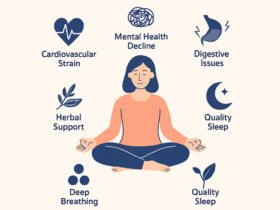Meditation is a practice that has been used for centuries to promote relaxation, reduce stress, and improve overall health and wellbeing. If you’re new to meditation, it can be intimidating to know where to start. However, with some simple techniques and a bit of practice, you can learn to meditate and enjoy the benefits of this ancient practice. In this blog post, we’ll provide a step-by-step guide to meditation for beginners.
Step 1: Find a Quiet and Comfortable Place
To begin meditating, find a quiet and comfortable place where you won’t be disturbed. Sit on a cushion or chair with your back straight and your feet on the ground. You can also lie down if sitting is uncomfortable. Choose a time when you’re not rushed and won’t be distracted by other tasks.
Step 2: Focus on Your Breath
Close your eyes and take a few deep breaths. Focus on the sensation of your breath as it moves in and out of your body. Notice the rise and fall of your chest and abdomen. If your mind wanders, gently bring your focus back to your breath.
Step 3: Notice Your Thoughts
As you meditate, you may notice thoughts and emotions arise. Instead of getting caught up in these thoughts, observe them without judgment. Acknowledge them and then gently bring your attention back to your breath.
Step 4: Practice Regularly
To experience the benefits of meditation, it’s important to practice regularly. Start with just a few minutes each day and gradually increase the length of your sessions. Aim to meditate for at least 10-15 minutes each day.
Step 5: Try Different Techniques
There are many different techniques for meditation, so it’s important to find one that works for you. Some common techniques include:
- Mantra Meditation: In this technique, you repeat a word or phrase (such as “Om” or “peace”) to help focus your mind.
- Mindfulness Meditation: This technique involves paying attention to the present moment without judgment.
- Loving-Kindness Meditation: In this technique, you focus on sending love and compassion to yourself and others.
Try different techniques to see what resonates with you.
Step 6: Be Patient
Meditation is a practice, and like any practice, it takes time and patience to see results. Don’t get discouraged if you don’t notice immediate changes. Keep practicing, and over time, you’ll begin to experience the benefits of meditation.
Step 7: Find Support
Meditation can be a solitary practice, but it can also be helpful to find support from others. Consider joining a meditation group or taking a meditation class. You can also find guided meditations online or through apps.
Benefits of Meditation for Beginners
Meditation has numerous benefits, including:
- Reduced stress and anxiety
- Improved focus and concentration
- Better sleep
- Increased feelings of calm and relaxation
- Improved emotional regulation
In addition, meditation has been shown to have physical benefits, including:
- Lower blood pressure
- Reduced inflammation
- Improved immune function
By taking the time to learn and practice meditation, you can enjoy these benefits and improve your overall health and wellbeing. Remember to be patient, find a technique that works for you, and practice regularly. With time and practice, meditation can become an important part of your daily routine.












Leave a Reply